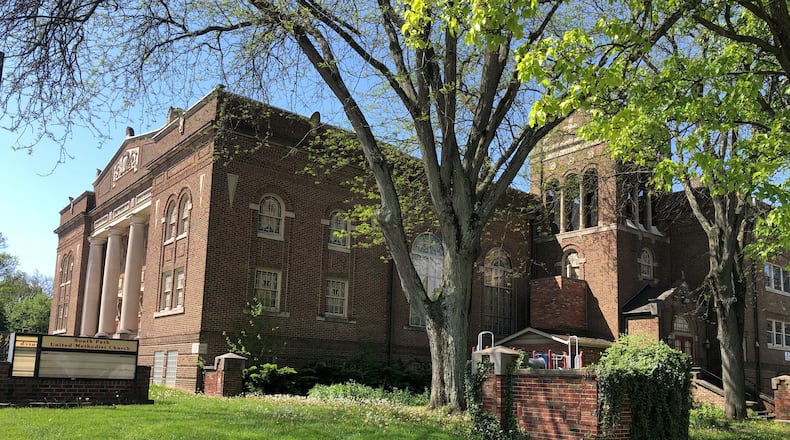The Board of Zoning Appeals has approved a conditional use request from the University of Dayton and Woodard Development to redevelop the South Park Methodist Church property near campus.
UD owns the property, located along Brown Street, between Stonemill and Sawmill roads. The project is a partnership between the school and Premier Health.
The project will retain the church sanctuary but also will construct a two-story medical facility with offices and lab services, Vincent said.
The revised site plan calls for 35,000 square feet of space and 101 parking spaces.
The original redevelopment plan called for demolishing the church, which was built in 1925.
But plans changed after some neighbors and citizens voiced strong opposition.
Premier will be the facility’s anchor tenant, offering primary care, orthopedic care, imaging, lab and physical and occupational rehabilitation services.
The building will house an employer clinic to serve the university’s nearly 2,700 full-time employees, and also it will provide evening and weekend urgent care services for UD staff and students.
“I would argue this is a very good use and a huge amenity for the community, the campus and the neighborhood,” said Jason Woodard, principal of Woodard Development.
UD takes its responsibility to be a good neighbor very seriously, and this is another step to help revitalize the Brown Street corridor, said Andy Horner, executive vice president for business and administrative services for UD.
A previous owner of the church property proposed turning it into housing, which UD opposed because it wants and has tried to keep student housing to the east of Brown Street, he said.
“We want good things for Brown Street and our neighbors,” Horner said.
But some neighbors say the project could create traffic and parking headaches.
Barbara Doerr, who lives on Sawmill Road, said the project would bring cars basically into her front yard and it would hurt neighborhood aesthetics and property values.
She said the proposed medical facility will bring way more traffic than previous uses of the church.
Mary Doerr, who also lives on Sawmill Road, said UD and Premier are not being good neighbors if they do not listen to the wishes of residents who live nearby.
She said she is worried about setbacks and parking.
John Downer, also a resident of Stonemill Road, said the project will have far more parking than it needs and that is required by code.
He said a smaller building with a reduced need for parking would be more appropriate and would have a much less negative impact on the neighborhood.
He said zoning regulations exist to protect neighborhoods, and the Board of Zoning Appeals should not approve the variances requested.
“The developer is putting a 35,000-square-foot medical building directly adjacent to a residential use,” he said. “There is not a transition between the two uses.”
A city staff analysis estimated the facility could welcome about 400 visitors per day, or potentially 28 cars per hour.
But medical offices are permitted in this district and planning staff believe this an appropriate use of the site, Vincent said.
Also, she said, this is a walkable area that is along transit lines and has access to the local bike-share system and rentable electric scooters, and some visitors won’t come by automobile.
Bo Bauer, a longtime resident of the neighborhood, said the property used to be home to a church, school, funeral home and dental office and visitors came and went frequently.
“It never really seemed to be a problem,” he said, adding the unused property is an eyesore right now. “I feel like we need to give in a little because Woodard and the developers and UD have given in a lot.”
“We suggested that let’s try to keep the church ― well they’re keeping the church, and that’s a huge, huge step,” he said. “If they don’t do this project, we’re going to look at this eyesore for who knows how long ― 5, 10 years.”
About the Author

